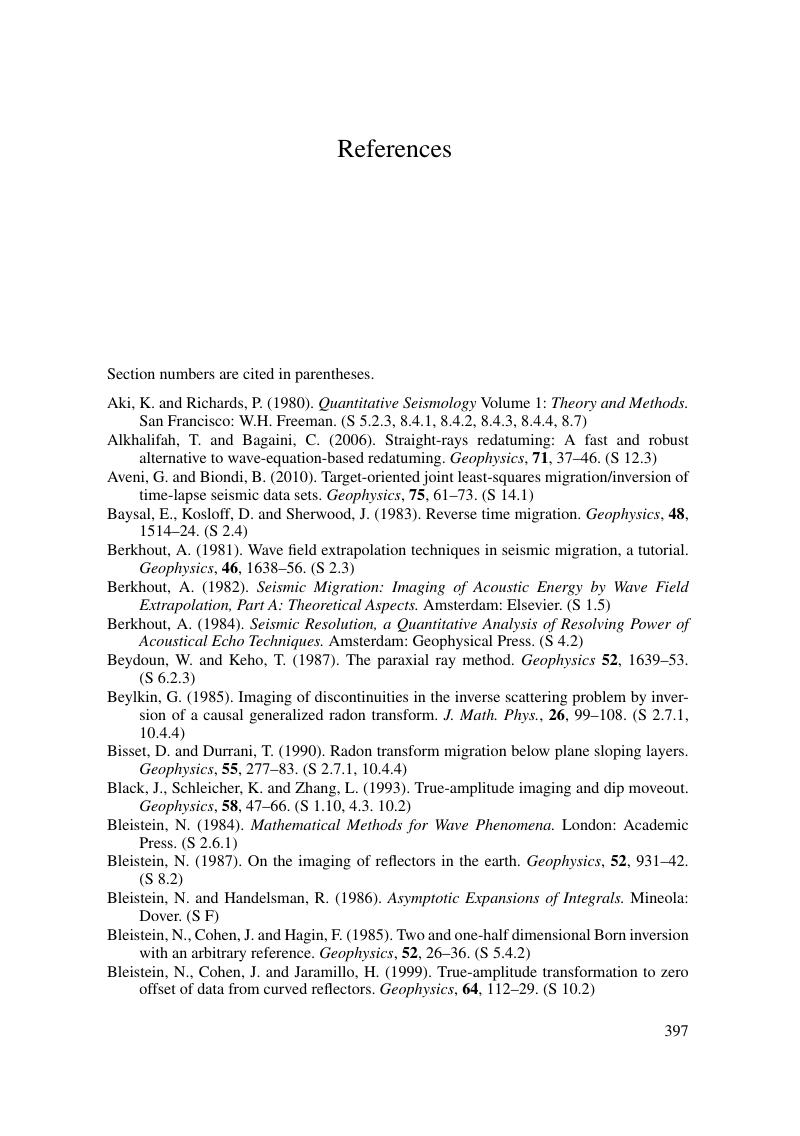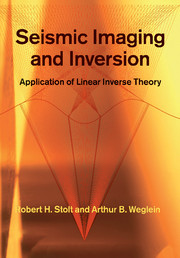Book contents
- Frontmatter
- Contents
- Preface and acknowledgments
- 1 Introduction – modeling, migration, imaging, and inversion
- 2 Basic migration concepts
- 3 Prestack migration
- 4 Migration limitations
- 5 Models for wave propagation and reflection
- 6 Green's functions
- 7 The scattering potential
- 8 Reflectivity
- 9 Synthesizing reflection data
- 10 Frequency–wavenumber migration
- 11 Asymptotic modeling and migration
- 12 Residual asymptotic migration
- 13 Asymptotic data mapping and continuation
- 14 Least-squares asymptotic migration
- Appendix A Conventions and glossary of terms
- Appendix B Coordinates, vectors, and identities
- Appendix C Fourier and Radon transforms
- Appendix D Surface and pointwise reflectivity
- Appendix E Useful filters
- Appendix F The phase integral and the stationary phase approximation
- Appendix G The diffraction integral
- Appendix H Wave-based, ray-based, and reflector-based coordinates
- References
- Index
- References
References
Published online by Cambridge University Press: 05 February 2012
- Frontmatter
- Contents
- Preface and acknowledgments
- 1 Introduction – modeling, migration, imaging, and inversion
- 2 Basic migration concepts
- 3 Prestack migration
- 4 Migration limitations
- 5 Models for wave propagation and reflection
- 6 Green's functions
- 7 The scattering potential
- 8 Reflectivity
- 9 Synthesizing reflection data
- 10 Frequency–wavenumber migration
- 11 Asymptotic modeling and migration
- 12 Residual asymptotic migration
- 13 Asymptotic data mapping and continuation
- 14 Least-squares asymptotic migration
- Appendix A Conventions and glossary of terms
- Appendix B Coordinates, vectors, and identities
- Appendix C Fourier and Radon transforms
- Appendix D Surface and pointwise reflectivity
- Appendix E Useful filters
- Appendix F The phase integral and the stationary phase approximation
- Appendix G The diffraction integral
- Appendix H Wave-based, ray-based, and reflector-based coordinates
- References
- Index
- References
Summary

- Type
- Chapter
- Information
- Seismic Imaging and InversionApplication of Linear Inverse Theory, pp. 397 - 400Publisher: Cambridge University PressPrint publication year: 2012



